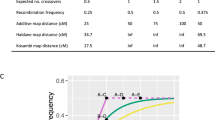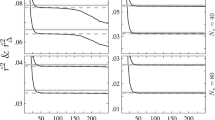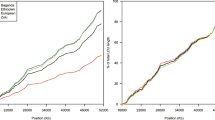Abstract
BY studying the simultaneous segregation of several genes in multiple heterozygotes, chromosome maps have been constructed for Drosophila, Zea and a few other organisms, and it has been shown that the order of the genes so deduced corresponds to a physical reality. It seemed likely that such maps could only be constructed very slowly for man, since very few pedigrees record the segregation of more than one gene at a time. In spite of this, indications of linkage between pairs of autosomal genes have been secured by Penrose1 and Bell2.
This is a preview of subscription content, access via your institution
Access options
Subscribe to this journal
Receive 51 print issues and online access
$199.00 per year
only $3.90 per issue
Buy this article
- Purchase on Springer Link
- Instant access to full article PDF
Prices may be subject to local taxes which are calculated during checkout
Similar content being viewed by others
References
Penrose, Ann. Eugen., 6 (1935).
Bell, Treas. Human Inher., 4 (1936).
Koller and Darlington, J. Gen., 29, 159.
Bernstein, Z. Abst. Vererb., 5 (1931).
Fisher, Ann. Eugen. (in the press).
Bell, Treas. Human Inher., 2 (1933).
Komai, ” Pedigrees of Hered. Dis. and Abnormals, found in the Japanese Race”. Kyoto (1934).
Cockayne, ” Inherited Abnormalities of the Skin and its Appendages”. Oxford (1933).
Siemens and Kohn, Z. Abst. Vererb., 38 (1925).
Author information
Authors and Affiliations
Rights and permissions
About this article
Cite this article
HALDANE, J. A Provisional Map of a Human Chromosome. Nature 137, 398–400 (1936). https://doi.org/10.1038/137398b0
Issue Date:
DOI: https://doi.org/10.1038/137398b0
This article is cited by
-
Whose Turn? Chromosome Research and the Study of the Human Genome
Journal of the History of Biology (2018)
-
Haldane and the emergence of theoretical population genetics, 1924–1932
Journal of Genetics (1992)
Comments
By submitting a comment you agree to abide by our Terms and Community Guidelines. If you find something abusive or that does not comply with our terms or guidelines please flag it as inappropriate.



